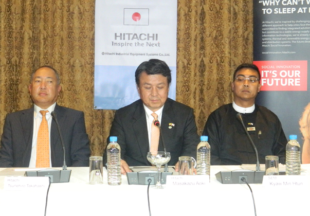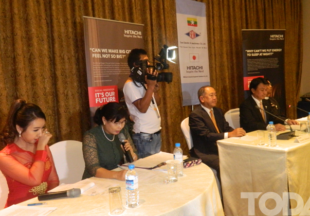Myanmar’s Macroeconomy: 2015- 2016 and 2016-2017

March 14
16:35
2016
- Myanmar’s total national income for the 2015-2016 financial year (from 1st April to 31st March 2016) is found to have been estimated at Myanmar Kyat 19403 billion and total national income for the 2016-2017 financi al year (from 1 st April 2016 to 31 st March 2017) at Kyat 17449 billion.
- Total expenditure for the year 2015-2016 was estimasted at Kyat 13,230 billion and that for the year 2016-2017 at Kyat 21,371 billion.
- Therefore total estimated budget deficit for the year 2015-2016 is Kyat 3,827 billion and that for the year 2016-2017 is Kyat 3,922 billion.
- Gross Domestic Product (GDP) estimate for 2015-2016 is Kyat 73,314 billion, and (GDP) for 2016-2017 is estimated to be Kyat 84,128 billion. Growth rate forcast is 7.8 percent.
- Revenue from taxation is expected to be Kyat 5,948 billion and that for 2016-2017 is expected to be Kyat 6,218 billion.
- GDP to revenue ratio for 2015-2016 is expected to be 8.11 percent and that ratio for 2016-2017 is expected to be 7.4 percent.
- Budget deficit to GDP ratio for 2015-2016 is expected to be 5.22 percent, and it is expected to be 4.66 percent for 2016-2017.
- Inflation rate for 2015-2016 in expected to be 8.11 percent, and it will be 11.68 percent for 2016-2017.
- The budget for the year 2015-2016 was prepared on the basis of 1020 Kyats to the dollor ,and that for 2016-2017 was based on the rate of 1,285 Kyats to the dollar.
- The value of export for 2015-2016 was expected to be USD 12,900 million and import value to be USD 29,9900 million. Trade deficit was estimated to be USD 4,100 million. Export value for 2016-2017 was expected to be USD 14,130 million and import value to be USD 17,265 million. The total trade volume was estimated to be USD 31,395 million. Trade deficit was estimated to be USD 3,135 million.
- A pilot servey in 2014 put Myanmar’s popu-lation at a total of 51,419,420: 24,821,176 males and 26,598,24 females,
- Effective measures to tackle budget deficit and trade deficit can contribute to the stabilization of Myanmar Kyat value. We should take into account how failure to keep inflaction in check can impact on the everyday living of an average man and how an upward trend can give rise to demand for higher wages and salaries; also how, for businesses, it can lead to a rise in production cost, with the resultant weakening competi-tieveness and a decline in market share.
Translated by Nyunt Thaung
./wp-content/uploads/2018/10/Emirate-Online-TDY.png)































There are no comments at the moment, do you want to add one?
Write a comment